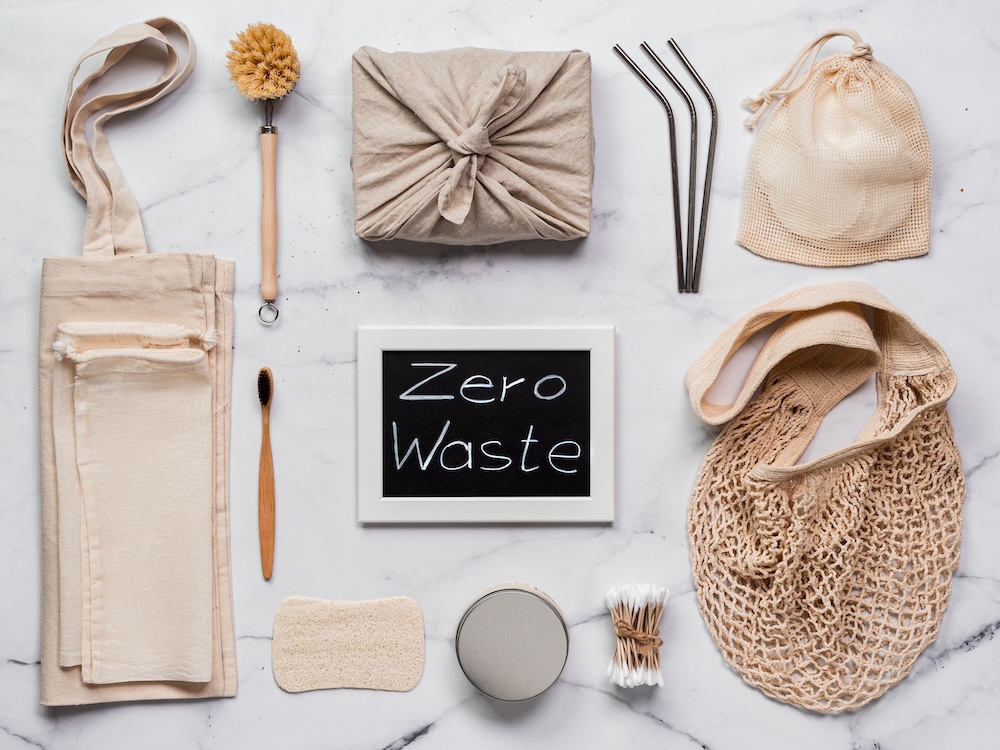Living sustainably doesn’t have to mean spending more or overhauling your life overnight. In fact, some of the most effective zero-waste habits are also the ones that help you save money, reduce clutter, and simplify your routine. The truth is, going zero-waste isn’t about perfection — it’s about making small, practical shifts that add up over time.
If you’ve ever thought, “I want to waste less, but I don’t know where to start,” this post is for you. These zero-waste hacks are beginner-friendly, low-cost (or totally free), and surprisingly satisfying. Even adopting just one or two can make a real difference — for the planet and your wallet.
1. Turn Old T-Shirts Into Reusable Rags or Produce Bags
Don’t toss that worn-out tee — repurpose it. Old cotton shirts make excellent reusable cleaning cloths, paper towel replacements, or even no-sew produce bags with just a few strategic cuts.
Why it works: Cuts down on disposable paper towel use and plastic bag waste.
Savings: Up to $120/year on paper towels and single-use bags.
Bonus tip: Flannel works great for streak-free mirrors and windows.
2. Make a DIY All-Purpose Cleaner With Baking Soda and Vinegar
Most store-bought cleaners come in plastic bottles and contain questionable ingredients. You can clean your whole kitchen (and bathroom) with basic pantry staples.
DIY recipe: Mix 1 part white vinegar with 1 part water. Add a squeeze of lemon or a few drops of essential oil for scent. Sprinkle baking soda for tough spots.
Why it works: Saves money, avoids plastic waste, and reduces indoor chemical exposure.
Savings: ~$100/year on branded cleaning products.
3. Save Citrus Peels for Cleaning and Deodorizing
Don’t throw away lemon, lime, or orange peels. These scraps can be used to create a natural cleaner or freshen up your home.
How to use them:
- Simmer in water to deodorize your kitchen air
- Soak in vinegar for 1–2 weeks to make a citrus-infused cleaning spray
- Dry and grind to add to homemade scrubs or fire starters
Why it works: Waste less food, add natural fragrance, and avoid synthetic air fresheners.
4. Ditch Ziplocks: Use Jars, Cloth Wraps, or Silicone Bags
Single-use sandwich bags are a convenience trap. Try reusable solutions instead:
- Glass jars for fridge and pantry storage
- Beeswax or cloth wraps for sandwiches
- Silicone bags for freezer and on-the-go snacks
Why it works: Stops the endless cycle of buying disposable bags.
Savings: $80–$200/year depending on household size.
5. Compost Food Scraps (Even If You Don’t Garden)
Composting is one of the most impactful zero-waste practices — and you don’t need a backyard to do it. Many cities offer drop-off locations or local compost services. Even if you don’t garden, your scraps can enrich someone else’s soil.
How to start:
- Collect fruit, veggie peels, coffee grounds, and eggshells
- Store scraps in the freezer if you don’t want odor
- Look up local composting sites or community gardens
Why it works: Reduces landfill waste, lowers methane emissions, and cuts down your trash volume.
Savings: Less need for trash bags and fewer garbage pickups.
6. Repurpose Packaging (Coffee Tins, Takeout Containers, etc.)
Before recycling that container, ask yourself: could I use this?
- Coffee tins can hold nails, screws, art supplies, or utensils
- Yogurt tubs make excellent lunch containers
- Takeout jars can store bulk grains, snacks, or even homemade dressing
Why it works: Avoids buying new storage products and keeps plastic in circulation longer.
7. Reuse Envelopes and Scrap Paper for Notes and Lists
Old envelopes, junk mail, and used printer paper all have one thing in common: they’ve still got blank space. Instead of buying notepads or sticky notes, make a habit of collecting scrap paper.
How to do it:
- Create a “scrap bin” near your desk or kitchen
- Cut into squares and clip them for easy access
- Use for shopping lists, reminders, or daily to-dos
Why it works: Simple habit that cuts down on paper use and waste.
8. Buy in Bulk Using Your Own Containers
Bulk bins aren’t just for hippies anymore. They’re everywhere — and they can seriously cut down your costs.
What to buy:
- Grains, legumes, nuts, seeds, spices, baking supplies
- Some stores allow liquids like oil or soap refills too
Tip: Bring jars, cotton bags, or reused containers and tare them at the counter.
Why it works: Less packaging, more savings.
Savings: Bulk items can be up to 50% cheaper than pre-packaged versions.
9. Freeze Leftovers in Muffin Trays for Perfect Portions
Cook once, eat twice (or more). Use silicone muffin trays to freeze soups, stews, or sauces in portioned amounts. Once frozen, pop them out and store in a container.
Why it works: Reduces food waste and avoids reheating more than you need.
Great for: Baby food, pet food, single servings, or meal prep.
10. Repair or Upcycle Before You Recycle
Don’t assume something is trash just because it’s broken or old. Most household items, clothing, or furniture can be repaired, upcycled, or creatively reused.
Ideas:
- Mend clothes instead of tossing
- Paint and refinish old furniture
- Use chipped mugs as planters
Why it works: Extends the life of your stuff and keeps it out of landfills.
Savings: Repair costs are usually far less than replacement — and upcycling is often free.
Final Thoughts
Sustainable living doesn’t have to be all or nothing. These zero-waste hacks are proof that small, thoughtful changes can reduce your environmental impact and save you money.
You don’t need a perfect system or a Pinterest-worthy pantry to start. Just pick one or two habits that feel easy right now — and grow from there. The most powerful shift? Realizing you can do more with less, without sacrificing comfort or convenience.
FAQs
What’s the easiest zero-waste hack to start with?
Reusing jars or making your own cleaner with vinegar and baking soda — both are simple, effective, and low-commitment.
Does zero-waste living really save money?
Yes! While some products (like reusable silicone bags) have upfront costs, most zero-waste habits reduce repeat purchases and cut utility or grocery bills over time.
Do I need to buy special gear to go zero-waste?
Not at all. In fact, one of the best zero-waste rules is: use what you already have. Many hacks start with leftovers, scraps, or “trash.”









Reader Interactions